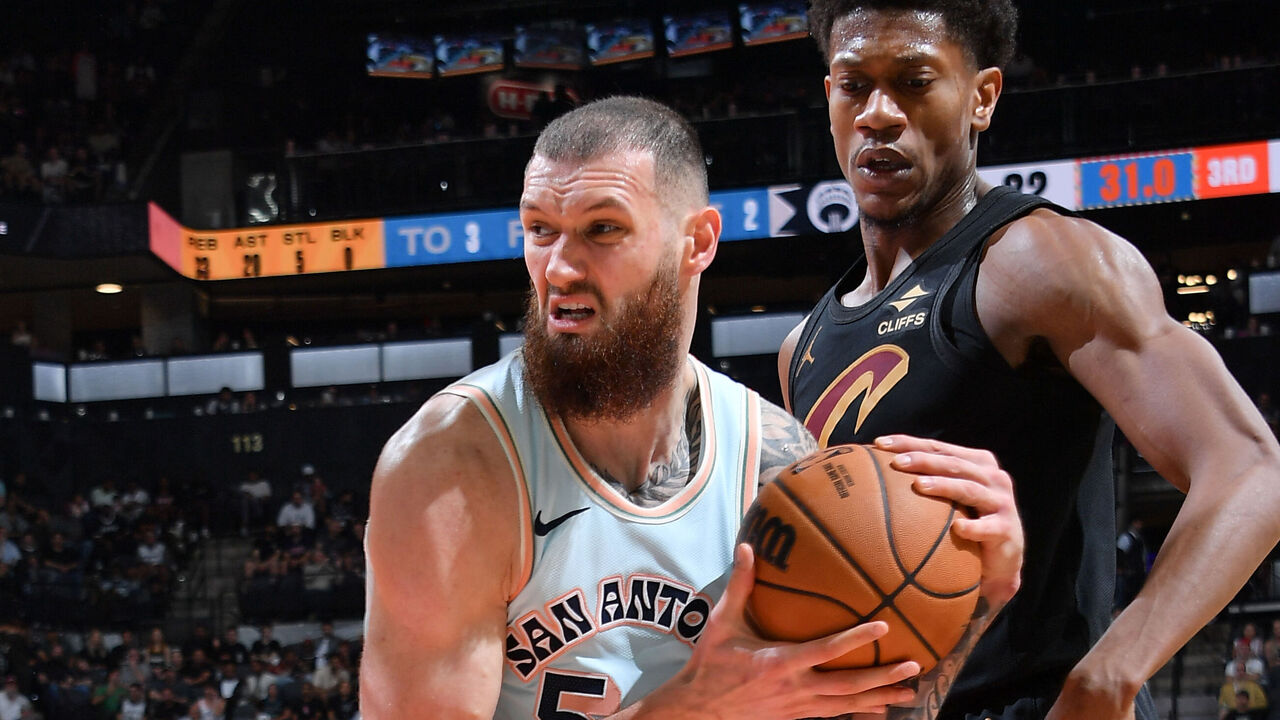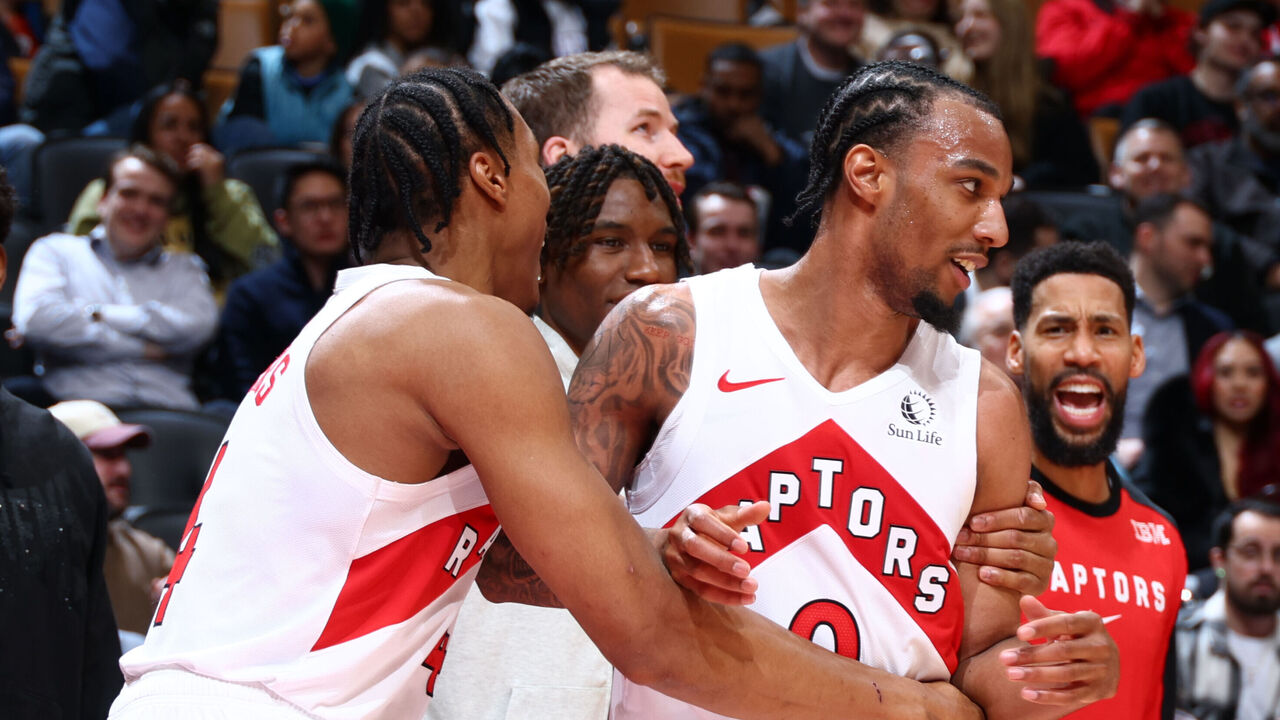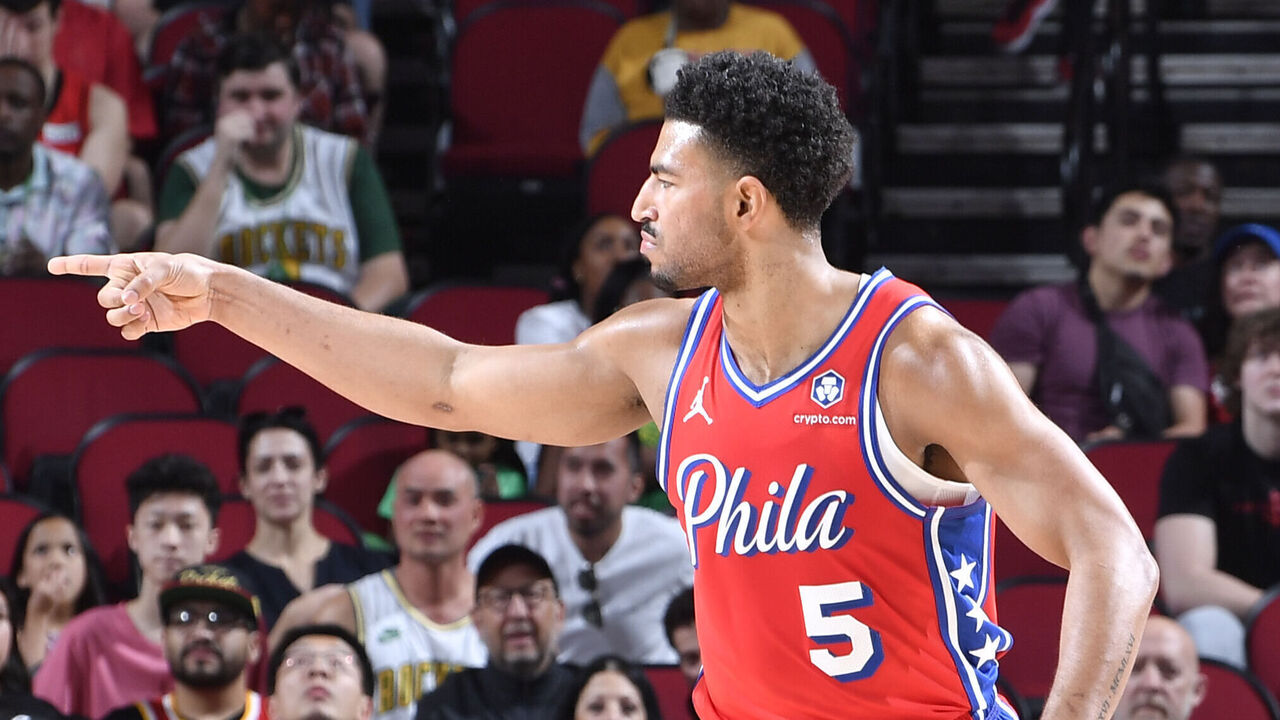What can we learn from March-April breakouts?
When basketball insider Jon Rothstein officially christens the flipping of the basketball calendar on the first day of March every year, it means different things to two subsets of the sport. The most wonderful time of the year in college hoops coincides with the doggiest dog days of the NBA calendar.
In the NBA in March and April, the worst teams are tanking, the best teams are coasting or resting, and every kind of team is simply depleted by injuries. In their attempts to either deliberately lose games, preserve their best players for the postseason, or patch holes in their banged-up rotations, teams will give minutes and touches to guys who wouldn't otherwise be entrusted with that level of responsibility. The result is a whole bunch of ugly games that don't "matter," at least not in the standings or for their predictive value for the playoffs.
But the games get played all the same, and the people involved still have to cull some meaning from them. For the players thrust into larger roles, this time of year is as important as it gets. It's a chance for some of them to prove they have more to offer and for others to prove they belong in the NBA. It's up to coaches and front-office people to discern what is or isn't translatable from possible outlier performances against diluted competition.
"There's so many things to learn watching guys at this time of the year," said Portland Trail Blazers coach Chauncey Billups, whose team has been in information-gathering mode at this stage for all four of his seasons at the helm. "As a coach, you try to give them the freedom to play, but you obviously understand there are challenges. … Your challenge (as a player in that situation) is to make the coach and coaching staff trust that if they put you out there, you'll do the right thing. You know all the coverages defensively, you know all the plays offensively, you're in tune, you're ready, you know the defensive scout, you don't make mistakes.
"When you're in that type of position, the margin for error is very small. You're just trying to prove that you belong, and sometimes it's a little different than the game you like to play. Sometimes it's scoring, but sometimes you can't score and you've gotta be a playmaker, you've gotta pick up the pressure defensively, you've gotta get offensive rebounds."
This is the time of year when a third-string point guard such as Malachi Flynn can come off the bench and drop 50 points in a game (as he did April 3, 2024, for Detroit) but still fail to secure an NBA contract in the offseason. It's when the rookies from a maligned draft class can play like stars, and a 14th man such as Sandro Mamukelashvili can go off for 34 points on 13-of-14 shooting in only 19 minutes. It's not always clear what, if anything, those performances portend.

"I don't think we look at it any differently than any other game," Spurs interim head coach Mitch Johnson said of Mamukelashvili's history-making performance. "I think he had a heck of a game in the NBA, and we don't try to figure out who was on the court when it happened or what the records of the teams were. I think it's something to be able to do that when you don't get the opportunity a lot. There's a lot of fringe guys who get opportunities to play late in the season and they don't do things.
"So, I think when you're around people and you see patterns, and you see how they work, and you see their approach, you should trust what they're showing you. And people that have seen Mamu in the gym with us for a couple years have seen that and have trusted that."
The Blazers felt that same way about Dalano Banton, who latched on with them late last season and produced 17 of the 18 highest-scoring games of his career in the span of about five weeks. He cleared 25 points nine times after doing so just once in his first two-and-a-half NBA seasons, impressing the team enough to get his fourth-year option picked up. This year he's been a relatively consistent - if highly specialized - rotation presence for the much-improved Trail Blazers.
"At the end of the day, a guy like Dalano, or whoever we're talking about, what they're trying to do is prove that they belong here," Billups said. "And then, after they prove that, it's trying to figure out what actual role a guy like that can fit in. And to me, if I'm on the other side of that coin, if I'm one of these players, that's all I'm worried about. You know, I'm a fringe type of guy, I want to do all the small things."
Another team in the show-me-something stage is the Toronto Raptors, who've spent most of this season focused on the future. They were 18-42 at the end of February, but, thanks largely to a stretch full of opponents who are tanking even more aggressively than they are, the Raptors are 12-8 since the beginning of March, with by far the best defensive rating in the NBA during that span.
They've done that while giving expanded minutes and roles to their trio of rookies: Ja'Kobe Walter, Jamal Shead, and Jonathan Mogbo, as well as to two-way guys such as A.J. Lawson and Jared Rhoden. All of them have had impressive stretches and showcased developing skill sets. Has that taught the Raptors anything about how to deploy those guys next season when they fold in Brandon Ingram and begin to make a good-faith attempt to win games?

"You gotta look at it through two different lenses," Toronto head coach Darko Rajakovic said. "First of all, the fit of the player with the team in a case where the whole team is healthy and everybody's playing. But number two, you always gotta look at, for the player, how he can expand his box. Like, what are the things that are realistic for that player that he can potentially start doing in the future, and really invest in that?
"Last couple of games we used Ja'Kobe at point guard. Doesn't mean he's going to be a point guard, but for him to feel more comfortable bringing the ball up the floor, to have one or two plays in his mind that he can call up and get us organized, I think it's worthwhile."
Of course, it isn't just fringe rotation players who can benefit from these circumstances; this is also a time of year when established players can boost their stock. Houston Rockets guard Jalen Green produced one of the most dramatic in-season turnarounds in memory in March 2024, and he parlayed that stretch into a three-year, $105-million extension in the summer. The Rockets likely don't regret the deal - they've been awesome this season and Green's been an important component - but his 2024-25 production is a lot closer to his previous career norms than to what he did that month.
This year, we've seen late-season outbursts from the Blazers' Deni Avdija, the Mavericks' Naji Marshall, the Bulls' Josh Giddey, and, of course, the 76ers' Quentin Grimes. While Avdija and Marshall are locked into team-friendly long-term contracts, Giddey and Grimes are pending RFAs, so Chicago and Philadelphia will have to decide how far they're willing to go to retain those guys and how to weigh their March performances in that calculus.
Grimes' situation is particularly interesting because the Sixers are going to be in a much different situation to start next season than they're in now. He had previously served as a no-frills, 3-and-D role player for three-plus seasons with three teams, defending hard at the point of attack and attacking closeouts with vigor but almost never creating his own offense. Then Dallas traded him to Philly, and he immediately turned into a high-usage heat pump for a team whose three best players are on the shelf.

He's averaged 22.4 points and 4.6 assists in 27 games as a Sixer, double his previous career highs in both categories. His usage rate has jumped to nearly 28% from a career average of 16%. His touch time per game has jumped from 1.6 minutes to 3.7 minutes, his drives per game from 3.9 to 10, and his pull-up jumpers per game from 2.2 to 6.4. And his efficiency has improved. Naturally, a lot of players in tanking situations wind up with inflated numbers because someone has to score for these teams. But Grimes is doing it while shooting 56% from 2-point range (including 70% at the rim) and 39% from deep.
"We didn't know a whole lot about him, you know, where he would fit in, what his role exactly would be," Sixers coach Nick Nurse said. "But obviously he's become, like, our primary scorer with everybody out, and I think it's cool to see. What I've learned about him is he can really get to places to get his shot up. That's really important. He's not that big, he's about 6-3, right? But he can get clearance. He can get to a spot, get clearance, bolt up. He'll surprise you with the athleticism in his jump shot. He'll go down the lane and dunk on somebody.
"So, there's some explosiveness there that enables him to get his shots off, and then he shoots it well. He shoots it well even when he's not that open, which I think is also a skill that's pretty highly regarded in this league."
Grimes obviously wouldn't be responsible for this star-level volume of self-creation if Joel Embiid, Tyrese Maxey, and Paul George were healthy. But that doesn't mean the skills he's flashed can't serve him well in a more complementary role, or that the Sixers shouldn't pay to bring him back and keep mining his on-ball utility in the future. It's clear he can be more than the pure spot-up role player he was before arriving in Philly. And we likely wouldn't have learned that if not for the opportunity presented by Mickey Mouse March.
All of which is to say, despite the fact this isn't the most illuminating or exciting time of the season to be an NBA fan, a lot is still going on, a lot is at stake, and plenty can be gleaned from the players and teams involved.
Joe Wolfond covers the NBA for theScore.
HEADLINES
- Flagg youngest in NBA history with 35-point game as Mavs beat Clippers
- East-leading Pistons hold off Heat to snap 2-game skid
- Hornets erase 17-point deficit to end Raptors' 9-game win streak
- Thunder's Hartenstein out at least 10-14 days with calf strain
- Pelicans' Looney returns to Bay Area after winning 3 titles with Warriors